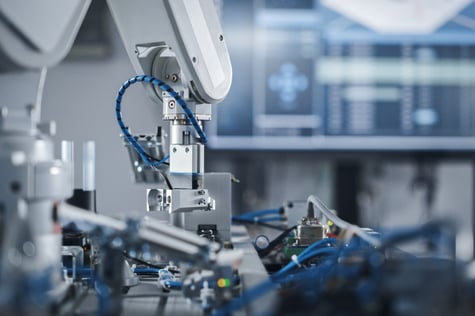Wireless devices provide healthcare services with the ability to improve patient care and boost efficiency. In order to ensure devices can provide these benefits, wireless performance needs to be prioritised through specialised networks and antenna integration.
In this article, we dive into the role of wireless devices in healthcare and the importance of their performance. We cover the specialised networks used in different applications, and unpack how antenna integration ensures they can properly support patients.
The role of IoMT devices in modern healthcare
Internet of Medical Things (IoMT) devices play an important role in modern healthcare by improving the reliability, accuracy and productivity of medical services. The purpose of these devices are to both optimise processes for medical staff and enhance the care of patients through modern technology. With constant innovations in areas such as IoMT system security, wireless devices are becoming an integral part of modern healthcare.
Applications of IoMT devices
- Patient monitoring - Wearable devices that monitor patient vitals in real-time provide efficiency benefits for hospital staff as well as convenience for patients that can remain at home without having to visit facilities for regular vitals updates.
- Specialised medical devices - Modern IoMT devices that perform specialised roles are becoming more common in healthcare. An example is a device that can detect internal abnormalities of patients using ultrasound. These devices perform specific roles that enhance the ability of healthcare professionals to support their patients.
- Optimised data management - Wireless IoMT networks provide healthcare staff with seamless communications that are faster and cheaper than traditional physical methods. They also minimise physical interactions between staff to boost efficiency and speed up the process for patients.
The importance of wireless network reliability
Regardless of the IoMT application, reliable connectivity is a necessity for wireless devices to provide reliable support to both patients and healthcare staff. Because of this, different wireless network technologies are used for specific IoMT applications to provide sufficient connectivity and reliability of wireless performance.
WBSN
Wireless body sensor networks (WBSN) are foundational to remote patient monitoring, supporting communications between different sensors and wearables to provide a holistic understanding of a patient’s status. WBSN networks consist of individual patient sensors that communicate to a master node (MN) via wireless IEEE 802.15.6. The MN then communicates the sensor data to a processing unit that forwards it to data analysis via Wi-Fi or cellular communications. The data is then finally being presented to staff and patients.
IEEE 802.16.6 is a specialised wireless international standard for health monitoring that focuses on low-power, short-range and extremely reliable wireless communications. This network enables around-the-clock monitoring of patients without the risk of IoMT power loss or interference.
WLAN
Dedicated wireless local-area networks (WLANs) provide medical facilities with seamless and reliable communications to enhance process efficiency. These networks can consist of different technologies (NB-IoT, LoRaWAN, etc.), but they each provide the same features that benefit healthcare facilities:
- High throughput to support advanced IoMT technologies.
- Good bandwidth to support dense environments without impacting connectivity.
- Reliable wireless performance in a localised area.
Why antenna integration is vital to enhance wireless device performance
Antennas are the key component of IoMT devices that determine their performance, functionality and reliability. They need to be suited for the specific device, network technology used and application environment they are in; hence the importance of antenna integration.
For sensors, antennas need to be compact and highly power efficient to operate for extended periods in small form factors. For medical specialised devices, antennas need to showcase high-performance and low latency to perform their specific task and support patients without the risk of malfunction.
Simplify the antenna integration of your healthcare device
IoMT devices are enhancing the healthcare provided to patients through convenience, process efficiency and new technologies. Wireless networks and antenna integration play crucial roles in ensuring these devices can perform their specific function reliably and properly support patients.
At Antenova, we provide a range of antenna solutions that suit any IoMT and wireless device design. Our products are available in a number of form factors, technologies and types, and each one showcases exceptional performance without compromising on other features. Our team of antenna integration specialists can also help you minimise the design cycle by aiding you in finding the perfect wireless solution.
To find out more about our wide range of high performance antennas and integration support, contact a member of our team today




